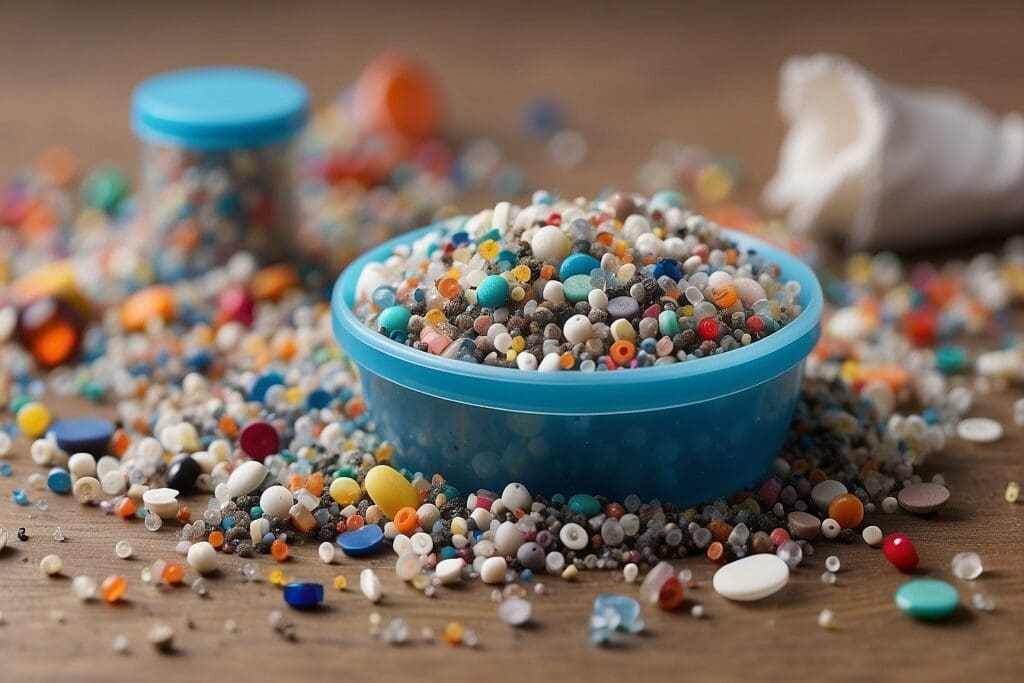Over the last few years, I’ve seen more and more skincare products with tiny, floating beads in them at the drugstore. It turns out that while these beads, known as microbeads, are tiny, they have quite a large impact on our environment.
What are microbeads?
Microbeads, often seen suspended in skincare products such as face and body wash, are pieces of plastic that are smaller than a pinhead. They were initially introduced into skincare products to act as exfoliants that could scrub away dead skin cells.1 A single product can contain as many as 350,000 polyethylene or polypropylene microbeads that are less than 5mm big.2
The History of Microbeads
The development of polyethylene began in 1939 right as World War II was beginning. Natural rubber was in short supply and finding a synthetic alternative was crucial for producing supplies. By the late 1970s, large-scale production of polyethylenes, which are lowered the cost so that they could be used in everyday products.3 Dermatologist Dr. Bobby Buka said of the rise of the microbeads, “Do I think there’s any Illuminati conspiracy to use microbeads? No. I think mass-production companies that were trying to get a lot of products out there fast thought this would be a quick and easy way to get that exfoliant quality into their products.”4
Negative Impacts of Microbeads

While they may be tiny, microbeads are ubiquitous because they are too small to be filtered out by sewage systems and therefore directly enter our rivers, lakes, and oceans.5 Scientists began noticing this problem a few years ago. Sherri Mason, an associate professor of chemistry at the State University of New York, Fredonia, dragged mesh nets in the Great Lakes with a research team to see what types of plastic pollution they would find. On Lake Michigan, her team found on average 17,000 tiny pieces of plastic, such as microbeads, per square kilometer. Lake Ontario had an even higher concentration: 1.1 million plastic particles per square kilometer.6
Unfortunately, to aquatic organisms these plastic particles look like food. Mason said, “They are about the same size as fish eggs, which means that, essentially, they look like food. To any organism that lives in the water, they are food. So our concern is that, essentially, they are making their way into the food web.”7 When aquatic organisms ingest microbeads, the chemicals in those plastic particles leach into the organism. These chemicals, such as bisphenol A (also known as BPA) build up and cause health issues for the organism. This process also poses a health issue for humans eating aquatic organisms since those toxins are making their way into our bodies, as well. Mason points out, “Even if you don’t eat fish, lots of people do. We’re all connected to each other. Water connects us all to each other. What we do [in the U.S.]… is affecting people [as far away as] New Delhi. We should still be concerned, even if we don’t eat the fish.”8 BPA is an endocrine-disrupting chemical connected to heart disease, cancer, Type II diabetes, and obesity.9
In response to this issue, Republican Fred Upton and Democrat Frank Pallon created the Microbead Free Waters Act. President Barack Obama signed the bill into law in December 2015, which banned plastic particles that are less than 5mm and are used for exfoliating and cleansing.10 While this is a step in the right direction, large pieces of plastic break into small pieces over time, leading to plastic particles as well.11
Environmentally Friendly Alternatives
Just because microbeads damage the environment doesn’t mean you have to forgo exfoliation! There are plenty of natural, biodegradable exfoliant options that are more effective and gentler on your skin.12
At-home exfoliant options:
- Brown sugar
- Coffee
- Oatmeal
- Baking soda
- Himalayan pink salt
You can mix these exfoliants with other ingredients such as lemon juice, coconut oil, honey, and avocado oil to make environmentally friendly face and body scrubs at home.13
Non-microbead options to look for on store-bought product labels:14
- Jojoba beads
- Rice-based
- Glycolic
- Salicylic acid
- Fruit enzymes
On switching away from microbeads, Dr. Buka said, “I can’t imagine anyone would say to a dermatologist, ‘I’m addicted to my microbead products.’ These products with microbeads just aren’t so great. I think it’s going to be hardest for the accountants trying to balance the books for Johnson & Johnson®, because now they’re going to have to spend more money on holistic botanical agents to give that same exfoliant quality to their facial wash.”15 So get out there and make your own exfoliant! It can be fun and most importantly, safe ☺





